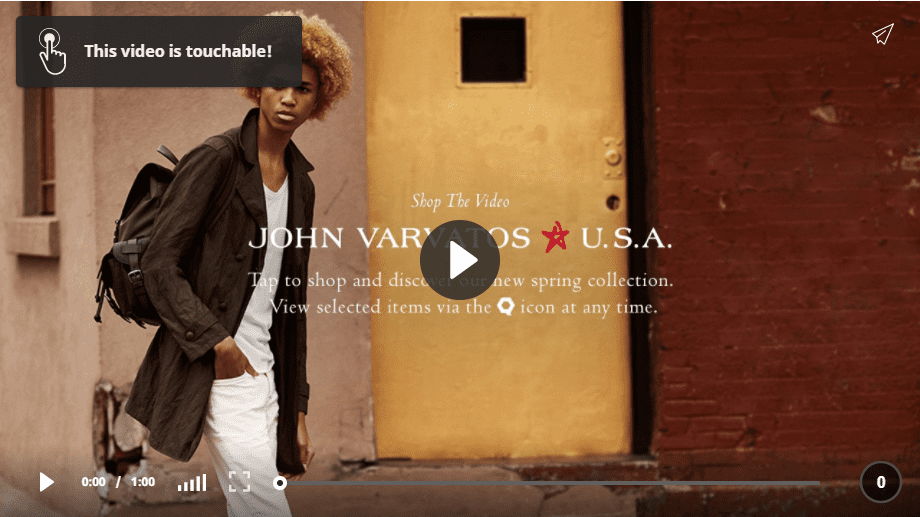Start Exploring Keyword Ideas
Use Serpstat to find the best keywords for your website
How To Start Using Interactive Content And Skyrocket Your Marketing Strategy Today


What is interactive marketing?
What is interactive marketing?
So how does the interactive content work? Psychologist Lev Vygotsky's constructivism theory explains that people create their own understanding through experience. These experiences are the ones that enable simultaneous development and learning. Information, education, and entertainment are the main components of interactive content and the reasons why it's extremely effective at educating the customers about your products and differentiating you from your competitors.
Interactive marketing in numbers
Interactive marketing in numbers
- Visual content like online quizzes with images or GIFs are 40 times more likely to be shared on social networks;
- 87% of marketers using interactive content agree that it grabs the viewer's attention more effectively than static content;
Top benefits of creating interactive content
Top benefits of creating interactive content
7 Formats of interactive content and how to use them
7 Formats of interactive content and how to use them
#1: interactive PDFs, e-books, and whitepapers
#1: interactive PDFs, e-books, and whitepapers
For example, ad tech company xAd made an interactive ebook to educate possibilities of location marketing. The eBook was also embedded in a sponsored content placement on The Guardian.

#2: Interactive infographics and data visualizations
#2: Interactive infographics and data visualizations
Get inspired by this The Geek's Guide to London infographic that instead of static has created an animated infographic that enables users to learn more about places in London by using the clickable map.

#3: Interactive Videos
#3: Interactive Videos
For example, this touchable John Varvatos Star U.S.A. video allows users to discover their Spring/Summer collection more engagingly.

#4: Calculators
#4: Calculators
Check out how BeeWits used a calculator to help freelancers calculate their hourly rate:

#5: Interactive emails
#5: Interactive emails
Here's how an E-mail Developer Mark Robbins pictures an email message checkout:

#6: Tests and quizzes
#6: Tests and quizzes
- Graded quizzes which give the user a score that can be shared on social media. For example, a score on how much a user knows about the world's capital.
- Outcome quizzes which give the user an outcome. For example, which city the user should live in.


#7: Interactive websites
#7: Interactive websites

How to get the most out of interactive content
How to get the most out of interactive content
- Have a clear message: Interactivity cannot substitute a real message. So before opting for interactive content explore your goals and think about your customers, their questions and how to offer them fitting responses.
- Choose the format that fits your goal: Consider what attributes of your product or service are the most useful in addressing customer's pain points. Then, select an interactive format that fits your message and is suitable for your content marketing strategy and goals.
- Start with a pilot program: Find one area of your customer's journey you want to optimize first. However, don't forget that the interactive content you're creating, no matter the size, has to be in line with your other content marketing initiatives.
- Repurpose your content: Interactive content doesn't have to be built from scratch. Instead, take some of your static content and convert it into interactive pieces. For instance, take stats or figures from your white paper and turn them into a quiz testing your visitor's knowledge.
- Take advantage of online tools: Creating interactive content doesn't have to be hard. There are plenty of online tools you can use to make different kinds of interactive content easily. For example:
- Zembula - an interactive content creation platform for email, SMS, and social media.
- Qzzr - an easy-to-use online tool that makes great looking customizable quizzes.
- SnapApp - helps you to make different types of content from calculators to surveys and infographics.
- ThingLink - an interactive platform that allows users to bring their photos and videos to life through the inclusion of rich media links.
- Measure the impact: Downloads, views, social shares, and other data is helpful when you set initial performance benchmarks. To get a well-rounded view of your content's performance, use some of the online analytic tools, e.g.:
- Google Analytics is a must if you wish to gain insights into conversions, page views, visitor demographics, and track interactions with your content.
- Hotjar.com lets you see how visitors are using your website with heatmaps and recordings of real visitors on your site.
- Capsulink is a URL shortener that protects you from traffic loss, damaged external links and offers insightful analytics.
- Quantcast reveals unique audience insights and helps to acquire new audiences through analyzing people's online behavior.
Bottom line
Bottom line
Discover More SEO Tools
Text Analysis Tool
Unlock the power of your text data with our advanced Text Analytics Tools
AI Content Detection
Ai Content Checker – realize if the text is AI-generated
AI Text Generator
Try our AI Content Writer tool and streamline your content creation process
AI Content Tools
AI Content Marketing Tools – simplify and optimize the content creation process
Recommended posts
Cases, life hacks, researches, and useful articles
Don’t you have time to follow the news? No worries! Our editor will choose articles that will definitely help you with your work. Join our cozy community :)
By clicking the button, you agree to our privacy policy.